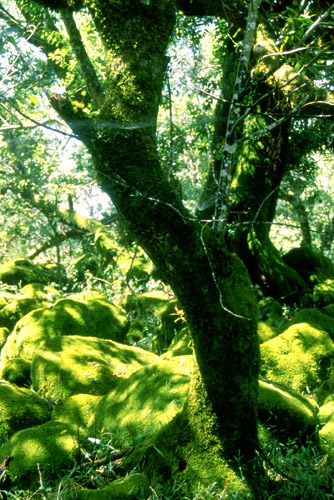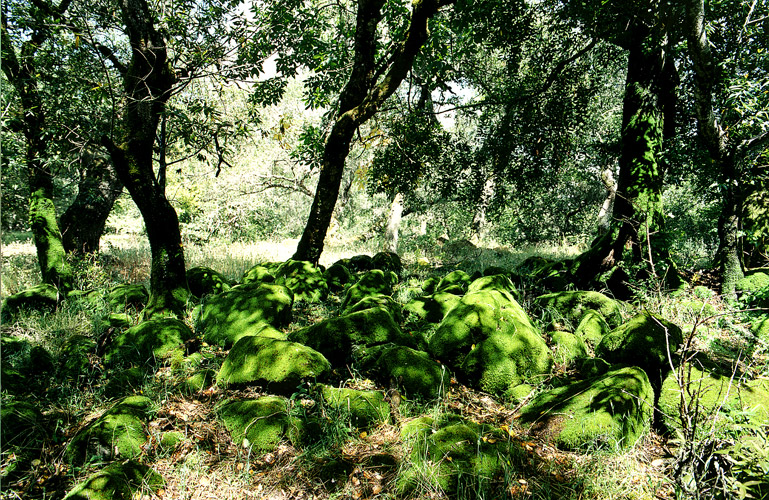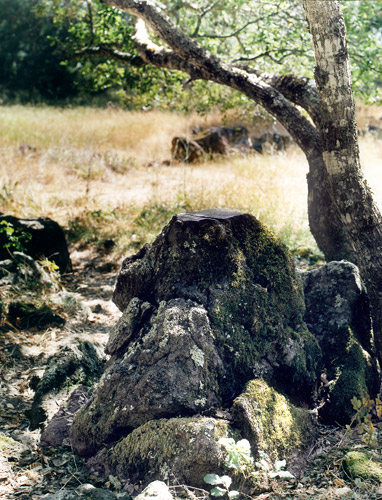|
Eocene
Eocene,
sited at the Paradise Ridge Sculpture Grove in Santa Rosa,
CA, is a symbolic recreation of the climate of the Eocene
geologic period of Northern California, which occurred from
40 to 60 million years go. Within a small region of moss
covered rocks, live oak and laurel trees a moisture-laden
microclimate has been created by a timed system of misting
nozzles attached to the tree limbs emitting periodic rain
showers on the area. The lushness of the misted area becomes
more pronounced as the surrounding vegetation changes towards
a golden brown during the summer months.
As
the lower Eocene progressed the climate (of central California)
became warmer and by the end of the lower Eocene had become
subtropical. The Sierra Nevada had been worn down to a
surface of low relief and was covered by a deep mantle
of decomposed debris, the result of deep chemical weathering
under hot humid conditions.1
|
Pliocene
A
companion work to Eocene, Pliocene considers
a rock unit from the ‘Sonoma Volcanics’ of the
Pliocene period in Northern California from 1 to 10 million
years ago. The top section of a prominent volcanic rock in
the grove is cut off in-situ to a level surface, ground smooth
and polished. This incision reveals the inner structure and
nature of the rock and the surrounding lava flow otherwise
obscured by centuries of weathering. Also see: Oculus:
Emerson/Beebe (Sonomia), 2000.
‘Sonoma
Volcanics’ is the name given to a thick accumulation
of flows, agglomerates, tuffs and tuffaceous land-laid
sediments that extend from the southern end of Sonoma Mountains,
on the north side of San Pablo Bay, northwestward through
Napa, Sonoma, and Lake Counties. Their
thickness depends on the nature of the surface over which
they accumulated and the proximity to centers of eruption.
In the bay counties their maximum thickness is about 1200
feet, but in places they are over 2000 feet thick. In
composition they have a wide range, including rhyolites,
dacites, andesites, hypersthene andesites, basalts and
olivine basalts. Some of the flows are very glassy and
obsidians equivalent in composition to rhyolite, dacite
and andesite are found.1
1 Taliaferro,
N. L., Geology of the San Francisco Bay Counties,
Geologic Guidebook of the San Francisco Bay Counties, Bulletin
154, California
Department of Natual Resources, Division of Mines, 1951, pg. 117-150 |


